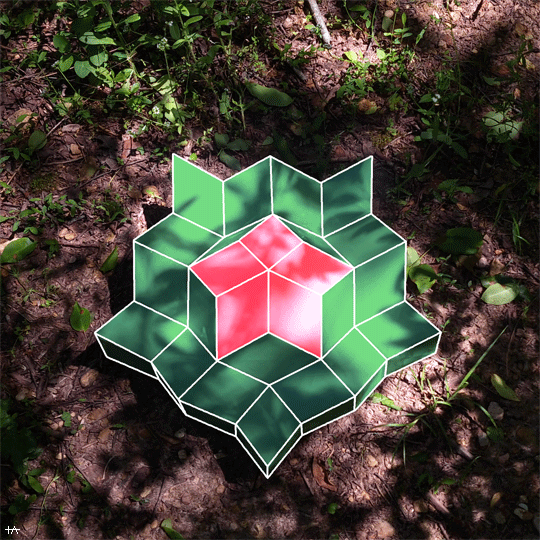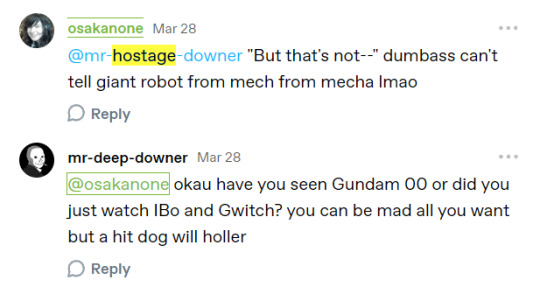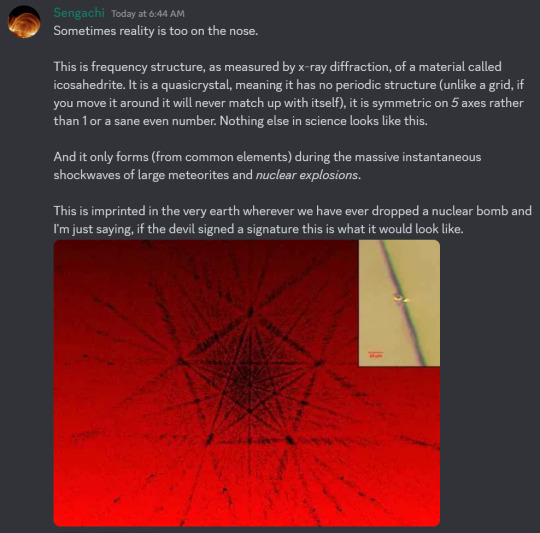#quasicrystals
Explore tagged Tumblr posts
Text
Rutgers University-New Brunswick researchers have discovered a new class of materials -- called intercrystals -- with unique electronic properties that could power future technologies. Intercrystals exhibit newly discovered forms of electronic properties that could pave the way for advancements in more efficient electronic components, quantum computing and environmentally friendly materials, the scientists said. As described in a report in the science journal Nature Materials, the scientists stacked two ultrathin layers of graphene, each a one-atom-thick sheet of carbon atoms arranged in a hexagonal grid. They twisted them slightly atop a layer of hexagonal boron nitride, a hexagonal crystal made of boron and nitrogen. A subtle misalignment between the layers that formed moiré patterns -- patterns similar to those seen when two fine mesh screens are overlaid -- significantly altered how electrons moved through the material, they found.
Read more.
#Materials Science#Science#Crystals#Electronics#Twistronics#2D materials#Quasicrystals#Rutgers University
13 notes
·
View notes
Text
What is a Quasicrystal? Approaches, And Future Implications

This article explains quasicrystals, their methods, and future implications.
What Creates Quasicrystals? Scientists Present First Quantum-Mechanical Model of Stability
A groundbreaking University of Michigan study that conducted the first quantum-mechanical simulations of quasicrystals found these strange materials to be fundamentally stable. This novel research overcomes classical quantum mechanics limits, solving quasicrystal understanding problems. The Nature Physics findings suggest that quasicrystals behave like stable crystals in their atomic arrangements despite their glass-like disorganised appearance.
What is a Quasicrystal
For decades, quasicrystals have puzzled scientists as a strange intermediate form between chaotic amorphous solids like glass and highly organised crystals. In contrast to ordinary crystals, quasicrystals have organised lattices but no infinitely repeating atomic patterns. After discovering a five-fold symmetry aluminium and manganese alloy in 1984, Israeli scientist Daniel Shechtman was the first to describe it.
Previously, this characteristic was supposed to prevent crystal repeating patterns. Shechtman won the 2011 Nobel Prise in Chemistry despite substantial criticism after other laboratories confirmed their existence and found them in billion-year-old meteorites. Quasicrystals lack indefinitely repeating patterns, which density functional theory (DFT), a classic quantum-mechanical technique, requires, hence their stability remains unsolved.
A New Simulation Method:
PhD student Woohyeon Baek and Dow Early Career Assistant Professor of Materials Science and Engineering Wenhao Sun developed a new modelling method to solve this problem. Instead of repeating, they “scoop out” tiny nanoparticles from a larger simulated quasicrystal block. Calculating the overall energy of these limited nanoparticles and extrapolating across increasing sizes can accurately predict the bulk quasicrystal's energy. Baek said, “The first step to understanding a material is knowing what makes it stable, but it has been hard to tell how quasicrystals were stabilised.”
Crystal-Stabilized Enthalpy:
The researchers found that two well-studied quasicrystal alloys of ytterbium-cadmium and scandium-zinc are “enthalpy-stabilized,” like crystals. Crystals are stable because their atomic configurations reduce chemical bond energy, unlike glass, which is “entropy-stabilized” by rapid cooling that freezes atoms into many chaotic arrangements.
Overcoming Computational Challenges:
Simulating the biggest nanoparticles was important to estimate energy accurately, which is difficult due to computing time scaling issues. Computing time may grow eightfold if nanoparticles were multiplied, even to hundreds. The GPU-accelerated method, developed with Professor Vikram Gavini, lowers processor-to-processor communication and speeds processing 100 times. This discovery simplified quasicrystal analysis and allowed simulation of complicated materials including glass, amorphous solids, and quantum computing-relevant crystal flaws.
Discovering Glass-Former Dynamic Similarities:
University of Michigan study showed that quasicrystals are structurally stable and resemble crystals, but a closer look at their dynamic properties revealed unexpected similarities to metallic glass-forming liquids. According to molecular dynamics simulations, glass-forming liquids and heated crystalline solids have quick beta and delayed alpha relaxation. Like quasicrystals and metallic glasses, they have a “kink” on Arrhenius plots for the temperature dependence of their diffusion coefficient and structural relaxation time.
Most crucially, dynamic heterogeneity in particle mobility fluctuations showed that the non-Gaussian parameter's peak value climbs with cooling, a behaviour more reminiscent of glass-forming liquids than hot crystals. Two types of atomic motion were found: isolated “phason flips” at low temperatures and frequent “string-like collective motions” at higher temperatures, which resembled glasses.
The “decoupling phenomenon,” the Stokes-Einstein link disintegration, best illustrates their glass-like dynamics. A fractional Stokes-Einstein relation with a decoupling exponent of 0.33 was found in which the temperature-normalized self-diffusion coefficient scales with structural relaxation time. Glass-forming liquids dissociate, whereas crystalline solids do not. This means metallic glass-forming devices are better at quasicrystal dynamics than crystals.
Future Impact:
A US Department of Energy-funded study sheds light on quasicrystals' fundamental properties. It supports the idea that quasicrystals are hybrid matter by connecting solid structure and motion. Phason flip movements and vibrational properties will be studied in three-dimensional quasicrystal models.
#Quasicrystals#quantummechanics#GPUaccelerated#densityfunctionaltheory#News#Technews#Technology#Technologynews#Technologytrends#Govindhtech
0 notes
Text

[Quasicrystals.]
1 note
·
View note
Text
Natural Quasicrystals! I didn't know that they existed outside of labs!
Here's an old vid on the structures behind these things, it's a really interesting story:
youtube
Years of combing through dusty archives turned up nothing, until a box from the Museum of Natural History in Florence, Italy, arrived at Princeton containing a nearly invisible speck of a rare mineral, khatyrkite. On 2 January 2009, the researchers became certain that they had discovered a natural quasicrystal (later named icosahedrite).
https://www.nature.com/articles/d41586-019-00026-y?utm_source=twt_nnc&utm_medium=social&utm_campaign=naturenews&sf205804864=1
9 notes
·
View notes
Text

3 notes
·
View notes
Text
youtube
1 note
·
View note
Text
At 5:29 am on the morning of 16 July 1945, in the state of New Mexico, a dreadful slice of history was made. The dawn calm was torn asunder as the United States Army detonated a plutonium implosion device known as the Gadget – the world's very first test of a nuclear bomb, known as the Trinity test. This moment would change warfare forever. The energy release, equivalent to 21 kilotons of TNT, vaporized the 30-meter test tower (98 ft) and miles of copper wires connecting it to recording equipment. The resulting fireball fused the tower and copper with the asphalt and desert sand below into green glass – a new mineral called trinitite. Decades later, scientists discovered a secret hidden in a piece of that trinitite – a rare form of matter known as a quasicrystal, once thought to be impossible. "Quasicrystals are formed in extreme environments that rarely exist on Earth," geophysicist Terry Wallace of Los Alamos National Laboratory explained in 2021.
Continue Reading.
170 notes
·
View notes
Text
@wormtoxin this guy in your comments section is a loser and a casual, wearing a wojak. The fact you enjoy mecha means you're *already* a "real" fan. Ignore downer, and enjoy robots :)
@mr-deep-downer You are in no position to be gatekeeping or calling anybody "a fake fan" lmao

I (00) raise you:
Do you know the name of this instrument?
Have you seen G Savior?
Can you quote G Savior?
How many interviews by Tomino have you read?
How many TIMES have you read the novels?
The iterations of the scripts?
Do you read mechanical archives?
Do you read Dengeki Hobby Magazine?
Have you seen the CAD files?
Do you know about the Tomino Nagano affair?
Do you know about the limex gunpla fiasco?
Do you know about Ikeda's departure and Wing's original script?
Do you know Mead's prior interest?
Have you read Hige Fix?
Have you read Gaia Gear?
Have you ever speedrun the Gaia Gear game?
Do you know about Amuro's latent interest in BDSM?
Do you know what X/Y gauge bosons have to do with monopole induced baryonic decay, or quasicrystals in respect to 0CSFs?
Do you know what muon catalyzed helium 3 fusion and what it is in respect to UCMFs?
Do you understand the technical theory of how a magnetic coating is?
Do you know about the monkey Zaku?
Do you understand Minovsky warfare theory and how it actually isn't in every Gundam show, and how you can actually spot it?
Do you know what contolism is and how differs from Zeonism?
Do you know the three alternative endings of Hathaway?
Do you know where "what's your level of commitment" originally comes from?
Have you read For the Barrel?
Do you know what Char's Counterattack has to do with Japanese political figure Yukio Mishima?
Do you know what Mishima also has to do with Char's Deleted Affair?
Do you know why Nobel Gundam is a magical girl?
Do you know what Wing's writing has to do with Adam Curtis, neo-reactionaryism in Russian oligarchs, and Gadaffi?
Do you know what every town stopped at on Earth in Zeta have in common?
Do you know what Haman Karn's wall tapestry means?
Do you know what Unicorn's wall tapestry doesn't mean?
Do you know why Haman looks good doing clerical work?
Do you know what "Laplace's Demon" is and why it actually makes perfect sense of Unicorn if you know fairly basic physics?
Do you know why Charmuro exists?
Do you know Garma's happy ending in Gihren's Greed?
Do you know that Gundam: The Origin isn't canon, but is in fact how Casval sees himself when he's explaining his history to Kamille, and is in fact taking liberties with that explanation?
Do you know why Tallgeese is the black cockatoo of K'gari?
and most of all
Do you know the importance of salt?
Because if you were onboard
Whitebase wouldn't have needed to stop off and get any
youtube
#Get on my level#Your soul is weighed down by gravity#Dumbass Isnt Fit To Bea Fry Cook At McDaniels#Pile of hamburger#No Kiss For You
8 notes
·
View notes
Text
I'm freaking out because it's crazy that my dumb Royal Margarine x Reader rom/scifi fanfic made March 22nd, features a completely made up 4D-5D entity, called "Lightglass" sidesteps to alternate timelines.
And I'm waking up today to find out that things similar to this thing are just being discovered now, but in a more literal sense, called fucking "Time Quasicrystals"?????

https://www.popularmechanics.com/science/a64231309/scientists-create-new-state-of-matter-that-defies-time/
9 notes
·
View notes
Text

a finished YCH commission of Quasicrystal! character belongs to https://www.tumblr.com/ruikh
•──────────────•°•☆•°•──────────────•
i’m doing these for $22 each, DM me if you’re interested! https://devilsbathboy.carrd.co/
#digital art#feral art#wolvden#artists on tumblr#furry#sfw furry#feral oc#wolf#commissions open#ych art#ych open#canine art#ych commission
5 notes
·
View notes
Text
From @gallusrostromegalus's Discord server:

Transcribed: Sengachi Today at 6:44 AM Sometimes reality is too on the nose.
This is frequency structure, as measured by x-ray diffraction, of a material called icosahedrite. It is a quasicrystal, meaning it has no periodic structure (unlike a grid, if you move it around it will never match up with itself), it is symmetric on 5 axes rather than 1 or a sane even number. Nothing else in science looks like this.
And it only forms (from common elements) during the massive instantaneous shockwaves of large meteorites and nuclear explosions.
This is imprinted in the very earth wherever we have ever dropped a nuclear bomb and I'm just saying, if the devil signed a signature this is what it would look like.
[Image: In the top right corner is a photo of what looks like a long, thin something under heavy magnification. The rest of the image looks like a slightly fuzzy black pentagram inside a fuzzier inverted black pentagram, all on a red-gradient background]
15 notes
·
View notes
Text

Q&A: Crystallizing time—physicists create a new phase of matter in the center of a diamond
In their ongoing efforts to push the boundaries of quantum possibilities, physicists in Arts & Sciences at Washington University in St. Louis have created a new type of "time crystal," a novel phase of matter that defies common perceptions of motion and time. The WashU research team includes Kater Murch, the Charles M. Hohenberg Professor of Physics, Chong Zu, an assistant professor of physics, and Zu's graduate students Guanghui He, Ruotian "Reginald" Gong, Changyu Yao, and Zhongyuan Liu. Bingtian Ye from the Massachusetts Institute of Technology and Harvard University's Norman Yao are also authors of the research, which has been published in the journal Physical Review X. Zu, He, and Ye spoke about their achievement and the implications of catching time in a crystal.
Read more.
14 notes
·
View notes
Text
A Look into Another Dimension: The Strange Physics of Quasicrystals
4 notes
·
View notes
Text
"Researchers at Aalto University's Department of Applied Physics have found a new way to create tiny hurricanes of light—known to scientists as vortices—that can carry information. The method is based on manipulating metallic nanoparticles that interact with an electric field.
The design method, belonging to a class of geometries known as quasicrystals, was conceived by Doctoral Researcher Kristian Arjas and experimentally realized by Doctoral Researcher Jani Taskinen, both from Professor Päivi Törmä's Quantum Dynamics group. The discovery represents a fundamental step forward in physics and carries the potential for entirely new ways of transmitting information.
The study is published in the journal Nature Communications.
A vortex is—in this case—like a hurricane that occurs in a beam of light, where a calm and dark center is surrounded by a ring of bright light. Just like the eye of a hurricane is calm due to the winds around it blowing in different directions, the eye of the vortex is dark due to the electric field of bright light pointing to different directions on different sides of the beam.
Previous physics research has connected what kind of vortices can appear with how much symmetry there is in the structure that produces them. For example, if particles in the nanoscale are arranged in squares, the produced light has a single vortex; hexagons produce a double vortex and so on. More complex vortices require at least octagonal shapes.
Now Arjas, Taskinen and the team unlocked a method for creating geometric shapes that theoretically support any kind of vortex."
continue reading
#energy#matter#light#vortex#hurricane#spiralling#hurricanes of light#vortices#physics#electric fields#magnetic field#electricity#electromagnetism#information#transmission#optics#photonics#rotation#symmetry#data
2 notes
·
View notes
Text
The Surprising World of Quasicrystals: A Nobel-Winning Discovery 🌌🔍 Dive into the mesmerizing world of quasicrystals! 💎💫 In this video, we explore the groundbreaking discovery by Dan Shechtman in 1982 that challenged everything we thought we knew about crystal structures. Learn about the unique properties of quasicrystals, from their intricate geometric patterns to their industrial applications. Discover how this revolutionary work earned Shechtman a Nobel Prize and transformed our understanding of atomic arrangements. Join us on this journey through the beauty of science and nature! #Quasicrystals #ScienceExplained #NobelPrize #GeometricPatterns #MaterialScience #natureunveiled Unsolved mysteries Business Ideas Historical facts Interesting facts Random facts Psychology facts Tech history Top 10 secrets Top 10 mistakes Top 10 unbelievable Top 10 business Top 10 finance https://www.youtube.com/watch?v=LKqRknPSbys via Top10 Facts Club https://www.youtube.com/channel/UChcpRAdCyFdo78TOUMlVGSw May 20, 2025 at 12:17PM
#creepyfacts#ancientsecrets#unsolvedmysteries#top10mysteries#ConspiracyTheories#mysterylovers#history#TheTop10FactsClub
0 notes
Video
youtube
AlienScientist & Simon C Present, Quasicrystals & 3D Printing
0 notes